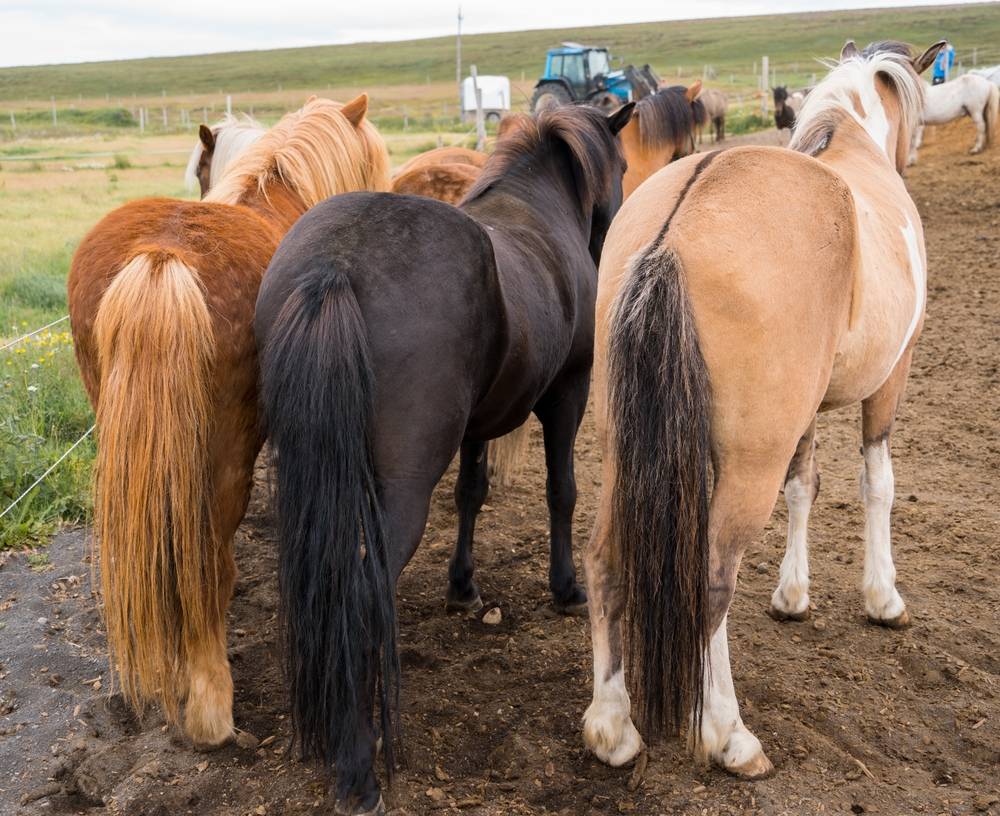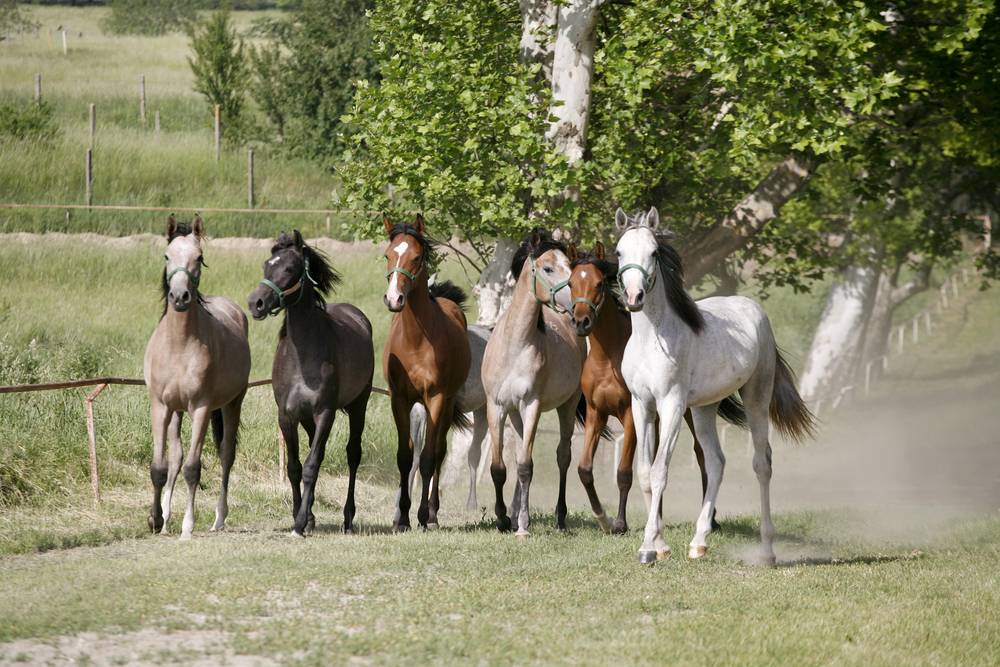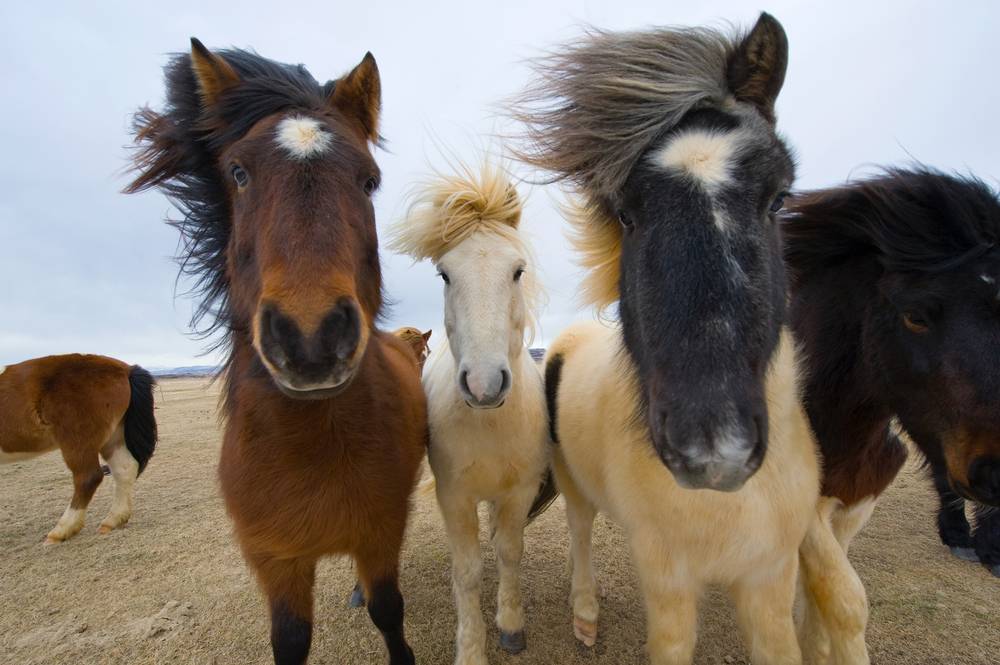From solid black to pinto, horses have captivated humans with their unique appearances for centuries. In recent years, advancements in genetics have led to the development of online tools like the horse color calculator. It can predict the color and pattern of a foal based on the colors of its parents. This innovative calculator has become an indispensable resource for horse breeders, owners, and enthusiasts. Check our horse coat color calculator below to predict the foal’s color.
What Is a Horse Color Calculator?
A horse color calculator is an online tool that uses the principles of genetics to predict the possible coat colors and patterns that may result from a mating between two equines. The calculator takes into account the color genes of the mare and stallion. It calculates the likelihood of each potential color outcome based on their respective genetic makeups. The calculator uses a combination of basic principles of inheritance, such as dominant and recessive genes, to predict the probability of certain colors.

Who Can Use a Foal Color Calculator?
Anyone who is interested in horse breeding can use a foal color calculator. Horse owners and breeders often use this tool to make informed decisions about which horses to breed together. Additionally, a foal color calculator can be useful for people who are purchasing horses or considering breeding horses in the future. As this tool can help them understand the coat color possibilities appearing in the foal.
While a horse coat calculator is not a substitute for expert breeding advice or a guarantee of a foal’s coat color, it can be a solid tool for anyone who wants to learn more about horse genetics.
How Does an Equine Color Calculator Work?
A horse coat color calculator uses basic horse genetics to predict the possible coat colors of the offspring based on the coat colors of its dam and sire. The calculator takes into account the different genes responsible for coat color and pattern. As well as the probability of each possible genetic combination that could be passed on to the baby horse.
To use the foal color calculator, the user inputs the coat color genes of the mare and stallion. Each horse’s color is determined by a combination of genes that are either dominant or recessive. Some genes, like the “E” gene, determine if a horse is black or bay. While others, like the “W” gene, determine if a horse has white markings.
The horse color calculator then takes these genes and uses them to calculate what color the foal may be. The tool may provide a percentage likelihood for each color and a list of possible colors.
Note that a horse coat color calculator is not a guarantee of the foal’s color, as genetics can be unpredictable. However, it can provide a helpful estimation of the potential outcomes.

The Basics of Horse Color Genetics
Horse coat color is determined by several genes that can be either dominant or recessive. Dominant genes are those that are more likely to be expressed and override the recessive genes. Recessive genes, on the other hand, are those that are less likely to be expressed. They may remain hidden until paired with another recessive gene.
One of the most important genes in determining horse coat color is the “E” gene. It determines whether an equine will be black or bay. The dominant form of the gene, “E,” produces black color, while the recessive form, “e,” produce a bay color. When a black horse and a bay horse are bred together, the offspring can be either black or bay. It depends on whether the black horse carries a recessive bay gene or not.
Another important gene in horse coat color genetics is the “W” gene. It determines the amount of white on a horse’s coat. The dominant form of the gene, “W,” produces solid color, while the recessive form, “w,” produces white markings. When two horses with varying degrees of white markings are bred together, the offspring can have a wide range of white markings. It goes from completely solid to almost all-white.
One example of offspring color probabilities is when breeding a chestnut mare and a bay stallion. Chestnut is a recessive color, so the mare must have two chestnut genes, represented by the symbol “ee.” The bay stallion must have one black gene and one bay gene, represented by the symbol “Ee.” When these two horses are bred together, the offspring have a 50% chance of being chestnut and a 50% chance of being bay.
Another example is when breeding two horses with white markings. Let’s say we breed a solid-colored mare with a white sock on one leg to a stallion with four white socks. The mare is most likely homozygous for the dominant “W” gene, represented by the symbol “WW”. And the stallion is likely heterozygous for the “W” gene, represented by the symbol “Ww.” When these two horses are bred together, the horse offspring have a 50% chance of having white markings on one or more legs, and a 25% chance of having four white socks.

The Most Common Horse Color Gene Symbols
There are several gene symbols used in horse coat color genetics, each representing a different gene and its variations. The most common gene symbols used are as follows:
- E – This symbol represents the extension gene, which determines whether a horse is black or bay. The dominant form of the gene is represented by the symbol “E” and produces black color. The recessive form is the symbol “e” and produces a bay color.
- A – This symbol represents the agouti gene, which determines the distribution of black color on a horse’s coat. The dominant form of the gene is represented by the symbol “A”. It restricts the black color to the points of the horse, such as the mane, tail, and lower legs. The recessive form of the gene is represented by the symbol “a”. It allows the black color to be distributed throughout the coat.
- W – This symbol represents the white spotting gene, which determines the amount of white on a horse’s coat. The dominant form of the gene is represented by the symbol “W” and produces solid color. The recessive form is the symbol “w” and produces white markings.
- K – This symbol represents the black gene, which produces black color on a horse’s coat. The dominant form of the gene is represented by the symbol “K” and produces black color. The recessive form is the symbol “k” and allows other colors to be expressed.
- G – This symbol represents the gray gene, which produces a gray horse. The dominant form of the gene is represented by the symbol “G” and produces gray color. The recessive form of the gene is represented by the symbol “g” and allows other colors to be expressed.
When representing the combination of genes that determine a horse’s coat color, each gene is represented by a letter symbol. For example, a black horse would have the genotype “EE,” while a bay horse would have the genotype “ee.” An equine that is black with white markings would have the genotype “E_WW”. While a chestnut horse with no white markings would have the genotype “eeWW.”

The Importance of Knowing the Foal’s Coat Color
- Horse breeders get the hang of color genetics to plan which horses to crossbreed. By understanding the expected coat color and pattern of a foal, breeders can select suitable parent horses to achieve the desired color outcomes.
- Knowledge of coat color can also be beneficial in marketing and selling horses. Certain coat colors and patterns may be more desirable to buyers.
- Some horse coat colors may be associated with certain health conditions. For example, horses with a predominantly white coat color may be more prone to sunburn and skin cancer. Knowing the foal’s coat color can help horse owners take appropriate measures to protect the horse’s health.
- Coat color can also be used for identification purposes, particularly in cases where equines have similar physical features or markings. A unique coat color or marking can help distinguish one horse from another.
- Some horse enthusiasts simply appreciate the aesthetics of certain coat colors and shades. Being able to predict the horse’s color can help achieve the desired visual outcome.
Conclusion
By understanding the basics of horse color genetics and using tools such as a foal color calculator, horse breeders can achieve their goals in crossbreeding. But remember that genetics can be unpredictable, and a horse coat color calculator can be a helpful tool in estimating the probabilities of offspring color.
We also recommend checking our mare gestation calculator to get the due date.
